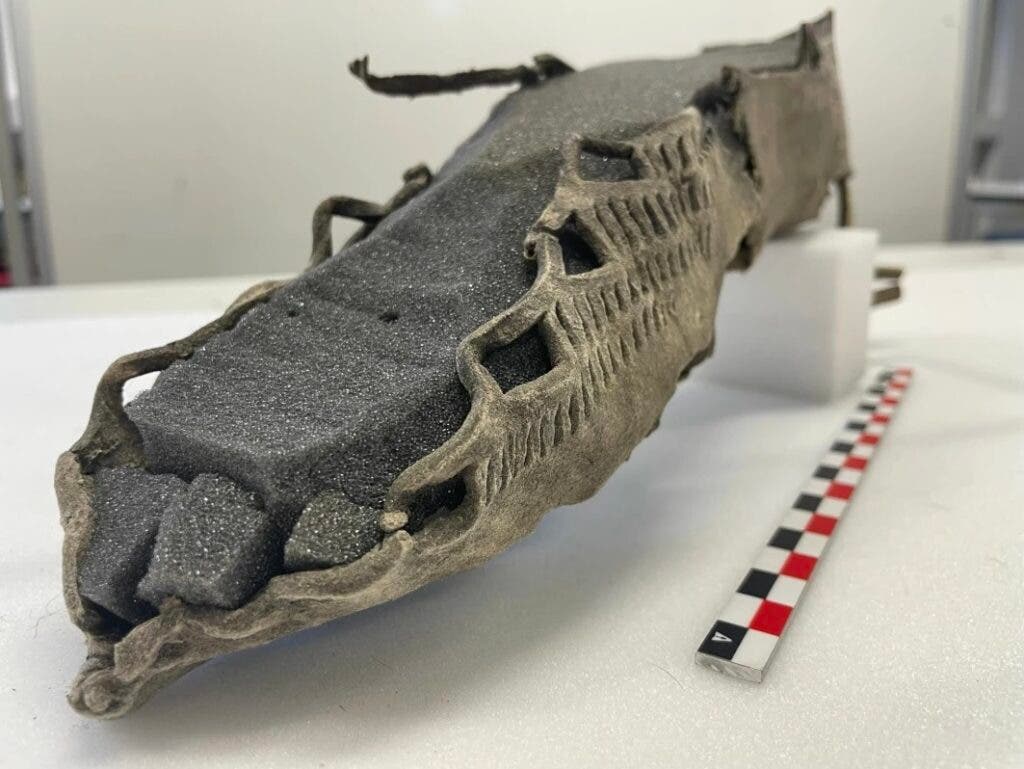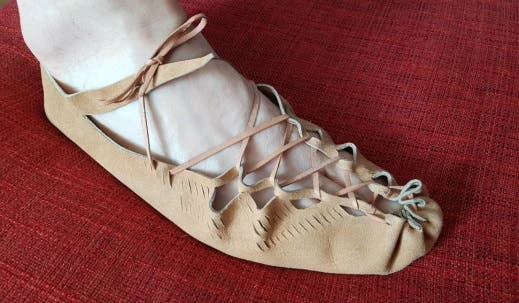Around the 4th century AD, an ancient traveler was making his way through the Horse Ice Patch, a challenging mountain pass more than 2,000 meters above sea level in Western Norway. Along the way, the traveler must have lost or discarded one of his shoes, a worn leather sandal of similar fashion seen in Rome, nearly 3,000 kilometers away. And what a shame too because this sandal was obviously built to last.

Almost 1,700 years later, an unusually warm summer in 2019 melted the top layers of snow and ice that had been accumulating at the site for centuries, revealing a shoe. A local hiker spotted it and thankfully realized its historical significance.
He took a few pictures and shared them, along with the site’s coordinates, with archaeologists affiliated with Secrets of the Ice, a glacial archaeology program that has so far uncovered thousands of artifacts in Norway’s melting ice and glaciers, including Medieval wooden skis and tunics probably worn by the Vikings.
Espen Finstad and colleagues from Secrets of the Ice knew the area well. Previously, they had found a 700-year-old medieval horseshoe and horse leg bone in the area. They traveled to the location on the Horse Ice Patch trail and started excavations with haste, retrieving the shoe, as well as other objects, including arrow shafts, textiles, and even frozen horse poop.
They finished in the nick of time too as the very next day the trail was covered by heavy snow which laid a thick coat across the site. If the storm had arrived earlier, this lucky sandal would have probably never been found.
These sandals were made for walking

Examinations performed by Vegard Vike, an archaeological conservator at the Kulturhistorisk Museum in Oslo, showed that the rawhide shoe is a size nine sandal designed in the Roman carbatina style, which was very fashionable across Europe during the dawn of the Western Roman Empire.
It’s highly unlikely that the traveler was actually a Roman tourist, though that possibility cannot be ruled out entirely. Nevertheless, the fact that Roman footwear could be found so far north and more than a thousand kilometers from the empire’s border shows how influential the Romans were.
In addition to the sandal, its owner must have worn thick wool wrappings or socks made from animal hide to combat the crippling cold. The wearer could have lost his shoe while trekking through the rugged landscape, but Lars Pilø, an archaeologist with Secrets of the Ice, believes it is more likely the traveler simply discarded the sandal as rubbish, finding it too worn out to be of any future use.
Like an experienced traveler, this person likely had a pair of new shoes with him just for such an occasion. Well, lucky us, for one man’s trash is another’s treasure.
The Horse Ice Patch is littered with a network of trails that link inland Norway to its coast. People traveling along these paths along with their pack horses were likely busy carrying supplies, loot, and trade items such as animal skins, antlers, and leather. Once they reached the fjord on the other side of the trail, travelers would have traded their products for salt, barley, and dried fish, then made the arduous journey back home to their village.
Most of these paths, which had been extensively used in ancient and Medieval times, are now almost impossible to spot since they fell out of use and are now covered in snow and ice. But sometimes archaeologists are lucky to find a loose ancient item, like this stubborn Roman sandal, which helps them mark the routes and plan new expeditions.
“The high mountain passes went out of use mainly because better roads were built in the lowlands from the mid-19th century,” Pilø told Ars Technica.
With a keen eye, Vike studied the details of the torn 1,700-year-old sandal and managed to make a reconstruction, as seen below. The original shoe, however, likely looked more rugged and fitting for mountain hiking than this reconstruction of its functionality.

Finstad and his team have been exploring the ancient mountain trails of Norway for more than 15 years. During each expedition, they are always on the lookout for hidden clues in the desolate and barren frozen landscape. Once the next summer melt happens, you can bet archaeologists from Secrets of the Ice will get their boots wet right that instant.
“It’s a giant puzzle. We’ve been close to figuring out where these mountain passes go for a while, we’ve been out there looking for clues. And then these finds appear and reveal one of them. It’s just very exciting,” Finstad told Science Norway.









